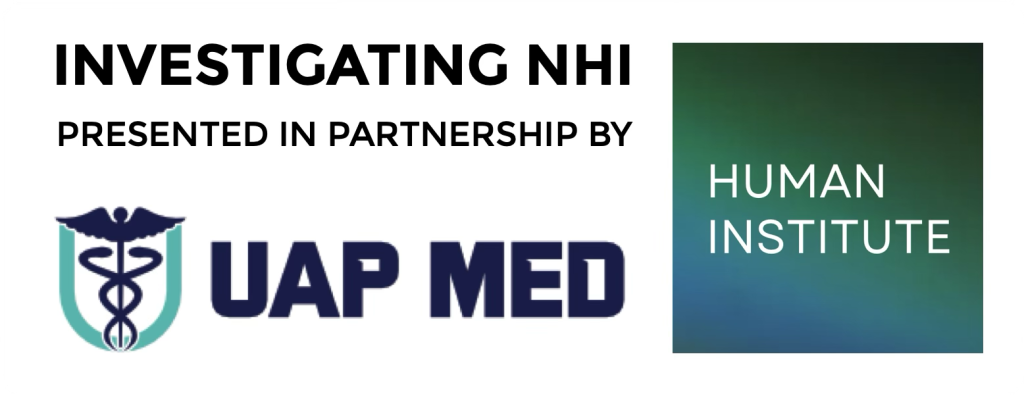Investigating Non-Human Intelligence
Be a speaker in the Investigating NHI series and join other leading thinkers in this effort to advance society’s understanding of emerging phenomena

Submission Guidelines
Prospective speakers should submit a roughly 400-word abstract or summary describing:
- Research objectives and methodology
- Data sources and evidentiary basis
- Relevance to one or more topic areas (below)
- How you approach and findings may contribute toward advancing rigorous inquiry into NHI phenomena
Critical Themes and Topics for Research and Investigation
Prospective speakers are encouraged to articulate their talk theme according to the topic guide provided below. Lectures and panels will be scheduled throughout 2025/2026 according to their synergy with this thematic structure.
1. Scientific and Research Foundations
- Philosophy of science and epistemological challenges in anomalous research
- Establishing scientific frameworks and research roadmaps for NHI investigation
- Taxonomies, classifications, and definitional standards for NHI encounters
- Identifying the characteristics of NHI encounters through systematic data analysis
- Astrobiology, biosignatures, technosignatures, and other detectable indicators of intelligent life
- Exigency of research, data sharing, collaboration, and coordinated response planning
- Applications of artificial intelligence and machine learning in UAP and NHI data analysis
2. Signs of Intelligence
- Pattern recognition, clustering, and intelligent signaling in UAP and sensor data
- Non-random flight behavior and indicators of controlled intent
- Field evidence of electromagnetic interference, instrumentation disruption, or radiation anomalies
- Morphology, material composition, and propulsion characteristics of observed craft
- Comparative models: animal cognition, machine intelligence, and potential NHI cognition
- AI and UAP: computational tools for anomaly detection, signal interpretation, and hypothesis testing
3. Communication and Contact
- Comparative models for cross-species communication
- Linguistic, semiotic, and computational frameworks for interpreting possible NHI signaling or communications
- Quantum mechanics, consciousness, and the science of non-verbal communication
- Advancing research in psionics, telepathic communication, and consciousness studies within empirical approaches
- Verification and validation standards for claimed message content or information transfer (“NHI messaging”)
- Structured human-initiated contact experiments and their data outcomes
4. Societal, Psychological, and Cultural Impacts
- Ontological shock: psychological adaptation to paradigm-shifting evidence
- Sociological and cross-cultural integration of anomalous events and realities
- Religious and cultural responses to contact and their impact on public interpretation
- Media representation, misinformation, and stigma in anomalous event reporting
- Analogues in post-colonial history, cargo cults, and manipulation of indigenous belief systems
- Assessing risks of ideological exploitation, psychological operations, and social engineering
- Public education strategies for maintaining rational discourse and psychological resilience in society
5. Close Approach, Exposure, and Direct Encounter
- Establishing witness veracity: evaluation tools, corroboration methods, and reliability scoring
- Developing medical and psychological response protocols for experiencers and professionals
- Clinical, neurological, and radiological correlates of close encounters
- Analyzing abduction experiences: missing time, immobilization, and manipulation of perception or cognition
- Hypnotic regression credibility — assessing memory retrieval validity and safeguards
- Reported biologics and physical characteristics of alleged NHI entities
- Comparative analysis of abduction and contact narratives
- Significant abduction cases and their evidentiary implications
- Integrating medical, physical, and behavioral datasets into unified investigative frameworks
- The future of experiencer data: models and structured approaches for reporting contact experiences
- Safety considerations for NHI contact and field investigation procedures
- Confidentiality, informed consent, and protection of human subjects in experiencer research
6. Consciousness, Psi, and Cognitive Frontiers
- Experimental and theoretical research into psi, telepathy, and non-local consciousness
- Cognitive neuroscience and the study of altered states in contact experiences
- Controlled studies of anomalous cognition under laboratory conditions
- Models of interspecies cognitive and informational exchange
- The interface of mind, matter, and technology in reported human–NHI interactions
- Evaluating methodological rigor and reproducibility in consciousness research
7. Public Safety and Responsible Engagement
- NHI origins: evaluating hypotheses spanning biological, technological, interdimensional, or artificial sources
- Frameworks for multidisciplinary collaboration among institutions, clinicians, and experiencer networks
- Models for data stewardship: chain of custody, data hygiene, open access
- Developing coordinated international response frameworks for potential future confirmation of NHI presence
- Political science dynamics of power competition, diplomatic regimes, and “rules of engagement”
- Integrating emerging evidence into policy, education, and scientific discourse
8. Ethics, Law, and Governance
- Ethical foundations in NHI and experiencer research
- Human rights implications of non-consensual encounters
- Examining principles of human sovereignty and consent in potential NHI contact
- Legal and institutional preparedness for NHI-related events
- Development of first-responder and medical response standards
- International coordination and governance frameworks for managing NHI presence and activity
- Policy models for transparency, accountability, and public communication
